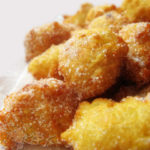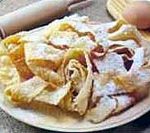
copyright, 2009, Maria Liberati
One of the most engaging holidays of the season, Halloween, has been carving out ghoulish jack-o-lanterns and the likes of trick-or-treaters for centuries. Highly recognizable are the spellbinding tales of campfires, midnight marshmallow roasts, and guising costume festivals… thus for many, October 31st marks the modern-day events of the Eve of All Hallows. Originating from Irish immigrants, the traditions spread across Europe to North America in the 19th century, as Halloween’s many rituals are now celebrated throughout world. Respectively, while some religious perspectives ascribe certain disbeliefs, the expansion of commerce chose to capitalize significant revenues based upon candy sales and billion-dollar costume industries. The evolution of haunting imagery, black cats, witches brew, religious ceremonies, and product commercialization, inevitably, remains the heart of the equinox. But more than ghost stories and prominent symbols, accounts of this spooktacular event date back as far as the first Pagan rituals, hailing ancient Celtic harvest festivals called, Samhain or Celtic New Year. Often paired with the Day of The Dead and All Saints’ Day, many cultures commemorate (the notional holiday) outside the Americanized standard of door-to-door candy solicitation, by marking November 1st and 2nd as calendar days of remembrance.
Carnevale Di Venezia, a long-established Italian tradition seems to parallel a combination of both Mardi gras and Halloween’s costume masquerading. However, its elaborate artistry, first recorded in 1268, is celebrated 40 days before Easter with restrictions of Lent and a grand festival just before Ash Wednesday. While gala dinners and extravagant costume balls of this winter festival trumpet throughout the various regions of Italy, some reports claim the urbanity of Halloween is literally beginning to mask those of Carnevale.
As food plays a significant role in the aspects of any celebration, the annual harvest of apples lend an air of entertainment to the many Halloween-themed activities performed. The friendly competition of apple bobbing or as the Scottish refer to as, dooking, remains a pastime favorite. Even holiday ‘begging’ has transformed throughout history, bringing phrases like ‘Do ye want guisers?’ to the simplicity of ‘Trick or Treat’. So, whether it’s pumpkin risotto to pumpkin carving or candied apples to brimming bags of candy cuisine… the sheer magic surrounding such mythical traditions can be enjoyed by all ages, young and old.
Have your own traditional Carnevale celebration for Halloween with these recipes:
Frittelle
Ingredients (for 6 people):
1 lb flour
1 cup raisins
2 tblsps pine nuts
1 tablespoon sugar
2 eggs
1 cup milk
I/2 cup grappa
1 packet brewer’s yeast
a pinch of salt
peanut oil to fry
icing sugar to decorate
Melt the brewer’s yeast and sugar with a little bit of warm water; then add flour, the eggs, grappa and milk. Don’t forget the pinch of salt. Mix everything and knead it for a while until you see some kind of small ‘air bubbles’ forming on the surface. Cover then with a napkin and leave it in a warm place to rise. When the dough will have doubled its volume, add the raisins (and pine nuts). Make ‘balls’ with a teaspoon and let them ‘slide’ into peanut boiling oil (oil should be deep enough to cover all the small balls; and remember not to put too may of them at a time). When they rise to the surf, turn them over, so that they become brown all over. Dry on kitchen paper, sprinkle with icing sugar and enjoy your fritoe!
Crostoli (is another typical Carnival dessert).
Ingredients (4 people):
1 cup flour
½ cup sugar
¼ cup butter
2 eggs
½ cup grappa
1 lemon
icing sugar
a pinch of salt
1 tsp pure vanilla
peanut oil to fry
Mix flour, sugar, vanilla, grated lemon peel and salt on the pastry board. Then make a well and put the eggs, the soft butter cut into small cubes inside the hole. Work it till it is smooth. With the rolling pin roll the dough very thin. Cut rectangles (about 8×12 centimetres) with the pastry cutting wheel and make three cuttings on each of the rectangles. Fry two or three rectangles at a time in abundant boiling peanut oil. Drain, dry on kitchen paper, cover with icing sugar. You can eat them either hot or cold.
For Holiday recipes and tips get your copy of the newly released The Basic Art of Italian Cooking : Holidays & Special Occasions
Follow Maria on Twitter : http://twitter.com/marialiberati
Special Thx to everyone at teh Lower Southampton Libnrary in Festerville, Pa for hosting my book signing this week!
Other Apperances coming up:
November 2- Willngboro LIbrary-book singing and cooking demo 7PM
November 4th-6th- Christmas in Italy weekend at Harvest Moon Bed and Breakfast in Lancaster,Pa.. Cooking classes and wine pairings from The Basic Art of Italian Cooking : Holidays & Special Occasions. Call 888-824-3763 for reservations and info.
November 14th-Warren Twp Library, Warren NJ 2PM- Book signing and cooking demo
November 21-Kuhn’s Corner Books- Perkasie ,Pa 12 PM- book signing and sampling
December 12th- Franklin Twp Library, Franklinville, NJ 12 noon- Book signing and cooking demo
Mangia Bene, Vivi Bene,
Maria

Good evening Hey! How are you? Happy late Halloween! 😀